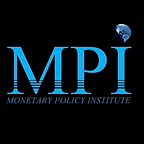Monetary Austerity as Social Conflict
David M. Fields
State of Utah, Housing & Community Development
Monetary austerity, like fiscal austerity, is a top-down offensive. A monetary assault on working people is being waged in the name of fighting inflation. In similar fashion to the demagoguery that surrounds government expenditure cuts that lead to significant losses in social provisioning, a political climate of inflation hysteria has engulfed the US Federal Reserve, engendering a reactionary policy stance of protecting the wealthy at the social cost of maintaining a precarious working class.
The Fed has concluded that inflation is now its biggest challenge, but admits having no control over the actual factors underlying the current inflationary surge. Nonetheless, it defends raising interest rates as necessary “preemptive strike” to excessive price distortion, whereby severe “market imperfections” in the long run could undermine the dual mandate of price stability and maximum sustainable employment. In central bank jargon, such so-called forward-looking acumen conveys the message that anchoring inflationary expectations is the primary means to ensure market confidence or “credibility” for effective macroeconomic balancing.
The notion of an independent and knowledgeable technocratic Fed constitutes naïve faith. Monetary policy choices support some interests over–even against–others. So, contrary to what we are told, contractionary monetary policy is NOT a conventional tool to soothe market confidence in light of unpredictable inflationary expectations; it is an embodiment of social conflict, a coordinated attack on the working class to protect and maintain profit extraction. Raising interest rates, thus, is not “sound” policy in the truest sense of the term; it reduces consumer spending and economic activity at the behest of the rentier to insulate this social group from any possible unsavory transgression that may arise from economic uncertainty.
I am sure this seems like heresy to many, but let me try to convince you. The economy, as determined by the need to expand output depends on banking; the capacity for firms to purchase necessary amounts of labor and material inputs necessary for satisfying expectations of profit and for workers to receive wages is assigned by the availability of credit. Without banking, economic growth comes to a halt, since business investment expenditures stem from the need to borrow in excess of any pre-existing amount of financial resources. Credit provides deferred payment, which allows firms to manage sales, and, thus, facilitate long-run operational expansion. If there is a restriction on credit, as a matter of course, any attempts for increased production are futile.
Credit allows firms to pay out money for materials and wages to keep production and distribution going in advance of receiving profits from expected sales of goods. The implication is that firms will have to deduct interest payments from profits, which will be relegated to the banking sector. The cost of available credit from the banking sector is set by the rate of interest, which is determined by the Fed; this, by definition, determines the parameters of firm profit. A high rate of interest, for instance, would induce firms to forgo productive investment because access to credit is expensive. This would encourage firms to suppress wages, e.g. layoffs, which triggers recessionary pressures resulting from decreased production — this raises the level of unemployment, which is antithetical to working-class interests.
The decision by the Federal Reserve to raise interest rates by the largest percentage point since 1994 is, therefore, quite treacherous for working people. US Economic growth is well below full employment. The economy confronts headwinds from developments that constitute cost-push-markup inflationary processes, so we are not seeing the manifestations of so-called demand-pull inflation, that is, too much money chasing too goods, or too much wage growth, resulting from an overheating economy or overspending for which monetary austerity is requisite. There is an economically destructive rationale at play, wherein interest rates are hiked to the point that they depress wages to compensate for causes outside of the direct reach of the Federal Reserve, to put a stop to workers from taking advantage of unique historically-specific social circumstances to effectively bargain for receiving their fair share.
***This post is heavily drawn from my entry on ‘Credit Money” in the soon to be published Encyclopedia of Post-Keynesian Economics, edited by Loui-Phillipe Rochon and Sergio Rossi, see here.***
